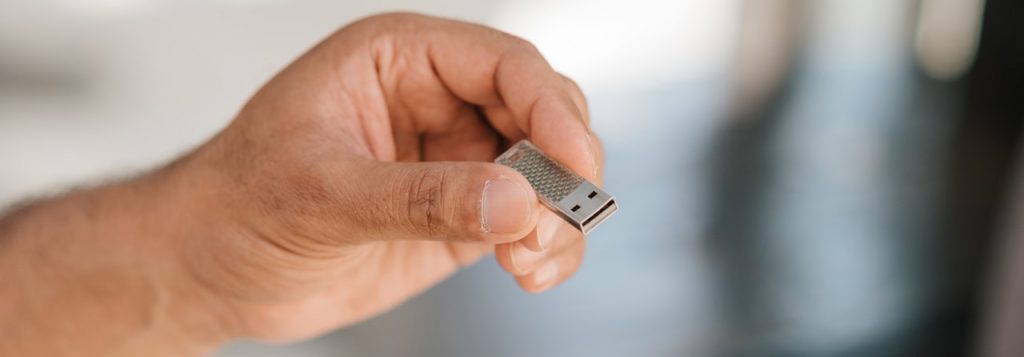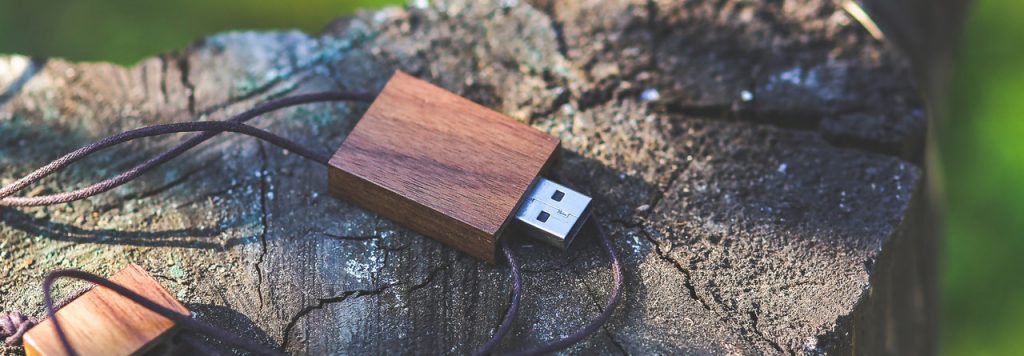USB drives are a really handy way to store and share documents, whether that’s your precious family photos, spreadsheets for your business or music that you want to shift from one computer to another. The price of USB drives is really cheap for the storage they have, but just like any storage, you can often find that a nearby USB drive is already full when you need that little bit of extra space.
If it’s just a small quantity of space you need, you could always delete a single file or two, but if you need the whole USB stick – or if it contains files, you no longer want or need – it’s more efficient to fully format that USB drive.
Without getting too deep into the computing nitty gritty, formatting a drive tells the drive (and anything you might plug it into) that all the space on that drive is available for new files to be stored on it. It totally wipes everything on the drive and sets the drive up for the best and most logical arrangement of new files to be written to it.
But how do you easily format a drive that’s already got content on it? Here’s how.
Bear in mind – and this is super important – that formatting a drive will wipe everything on that drive with little hope of recovery. As such, it’s vital to ensure you no longer need those files, or that you have them stored somewhere else if you do.

Formatting a USB drive in Windows
First step is to plug the USB drive into your Windows PC or laptop. Most USB drives still use the bigger rectangular USB plug type (Type A), but some newer drives have oval (Type C) connectors. If you’ve got a size mismatch – an oval plug and only square sockets or vice versa – you can buy adaptors to overcome that.
Windows should recognise the drive relatively quickly, and it may pop up a little notification asking what you want to do with removable storage. If it doesn’t, it’s not a big drama. Open up File Explorer, often found in your lower taskbar as a manilla folder icon, or you can just start typing “file explorer” without the quotes into the search box in the lower left-hand corner and it should find it.
A big and vital step here is identifying which drive is your USB drive. Windows refers to drives by alphabetical letters, with the C: drive almost always your onboard hard drive storing Windows and all your files. Never, ever proceed with this until you’re 100% confident you’ve got the right drive letter.
One quick way to verify this within File Explorer is to look at the capacity and drive icon. If you know you’ve got an 8GB flash drive, look for a drive with slightly less than that as its total capacity. It’s likely it’ll be the smallest drive on your computer. To be double sure, click into it to see if the files you’d expect to be there are present. If you see folders like “Windows” or “Program Files”, that’s not it, for sure.
Again, be certain that you have the right drive and want to wipe it, because recovery is difficult to impossible depending on the choices you make from here on in.
Formatting is built into file explorer, and all you need to do to start is right click with your mouse or on the trackpad area on your laptop used for right clicking on the drive itself.
You should get a pop-up menu with an option labelled “Format”.
Choose that option, and you’ll get another fresh window identifying your drive, its capacity and the file system to be used. In most consumer cases you can leave everything as it is here, although if you do want to label the drive (under Volume Label) you can call it anything you’d like with standard alphabet and number characters. Some computers and systems will struggle with spaces and punctuation marks, so it’s best to avoid those.
There’s one more choice to make here, and it’s the option of Quick Format. The easiest way to explain this is to pretend your USB drive is like a neighbourhood, and you’re the town planner, looking at redevelopment. Quick Format essentially labels an area as ready for demolition, but (strictly speaking) nothing gets knocked down just yet.
It simply tells the computer that the space on the drive is fine to overwrite with new data. It’s faster, but if you have sensitive data, or want to be sure that the data is gone, you’d unselect this. To keep with our neighbourhood analogy, that’s the equivalent of sending in the bulldozers to flatten the entire place. There are tools that can sometimes recover from a Quick Format if it’s accidental, but it’s not assured in any way.
A full format is unlikely to be recoverable, and if you’ve got data that must be wiped for business or personal reasons, there are apps that can do what’s called a secure erase. To further torture our analogy, you’re sending in the bulldozers once, then building new houses, then bulldozing again. Good luck recovering the original house from that situation, but then that’s very much the point.
You will get another warning that you’re about to wipe all the data on the disk before you proceed. Check that you’ve got the right drive and no longer want the data and click the OK button if you’re certain.
Once the format is complete – typically this should just take a few seconds – your USB drive is good to go, fresh as the day you purchased it.

Formatting a USB drive in macOS
Apple’s macOS uses a similar sort of setup for formatting drives, but with a more visual twist. Here you want an app called Disk Utility, which you can find in your Applications folder under Utilities. You can more quickly find it by pressing Command+Space to invoke Spotlight search and typing “Disk Utility”.
Disk Utility does make it easier to spot your external drives, because they’ll be found under the section called “External Drives”. Click on the USB drive so it’s highlighted, and then on the “Erase” button.
Here you can rename your soon-to-be-formatted drive if you wish, as well as select its format options. Disk Utility has secure erase functions built into it under the Security Options button if you need that. Make your choices, double check that you’ve got the right drive and backups in place and click erase. For most USB drives it should only take a few seconds, and your drive’s good to go with all of its storage available for whatever you want to keep there.
Check out our page on Data Recovery if you have lost precious data such as photos, videos, documents and more, or if you’re looking to protect and backup your files, read our page on Data Backup and Transfer.






